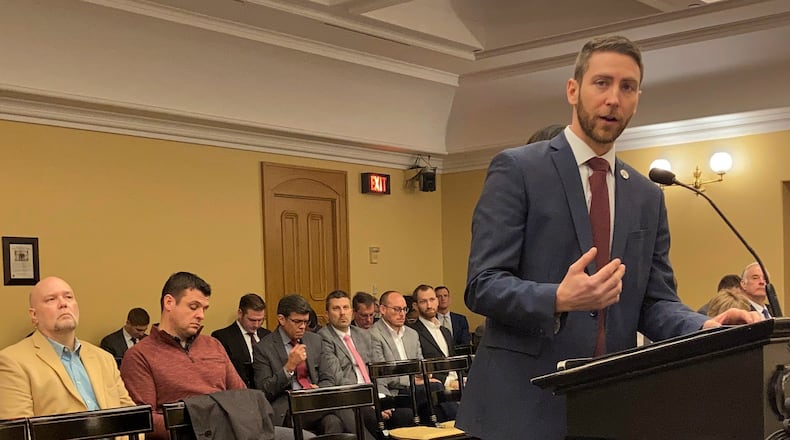The Backpack Bill, or House Bill 11, would make all public, nonpublic, charter and home school students eligible for a state scholarship, funded through an education savings account, according to the Ohio Legislative Service Commission, which provided the nonpartisan analysis. Currently, only students who live in poorly rated districts or whose parents make under 250% of the federal poverty line are eligible for Ohio’s voucher program.
The LSC is a nonpartisan agency that provides the Ohio General Assembly with drafting, research, budget and fiscal analysis, training, and other services, according to their website.
The $1.13 billion number assumes that an estimated 185,400 newly eligible nonpublic students take a scholarship under the bill.
Aaron Churchill, Ohio research director for the Fordham Institute, which supports expanded access to charter and private schools, says it’s unlikely all those students would accept, as some schools are expected to deny the accounts.
“It’s probably a ceiling in terms of how much it could potentially cost the state to move over to this program,” Churchill said.
Credit: Andrew Welsh-Huggins
Credit: Andrew Welsh-Huggins
Pruitt said even factoring in that fact, the cost is still high.
“Even if just 75% of the students took those vouchers, it would still cost us $848 million per year,” Pruitt said. “That’s still a massive price tag.”
She said public schools are still not fully funded as planned under the Fair School Funding Act, which was passed in 2021, yet the state is still proposing more than $1 billion to spend on charter, private and homeschool students.
That’s also concerning for the Ohio School Boards Association, which represents public school boards across the state.
“We believe the state’s priority should be to update and fully fund the Fair School Funding Plan, providing opportunities and resources for students who have chosen to attend their public schools,” said Jennifer Hogue, OSBA director of legislative services. “HB 11 would provide over $1 billion for private school and homeschool students while students who choose public schools continue to wait for the state to fully invest in their success.”
Churchill said it’s possible to manage that price tag by gradually phasing in the program, starting with younger grades and moving up to older grades. But he said the state could also choose to spend more money on public schools while increasing voucher funding.
“You can increase public school funding at the same time that you increase private school funding. There’s nothing in the budget that would restrict that possibility,” he said.
School transportation affected
The bill could affect the quality and efficiency of public school transportation, if passed.
Ohio law requires traditional school districts to transport all students in grades K-8 who live more than two miles from the school they attend, regardless of whether the students attend district, private or charter schools. Some schools also choose to bus students that live closer. But for students whose schools are more than 30 minutes away by bus, the district can offer payment instead.
The Backpack Bill could increase the transportation costs for school districts, if more students start taking advantage of a new law. That could affect districts like Beavercreek and Kettering, who currently don’t have that many students attending outside schools, compared to Dayton Public, where about half of the students living in the district attend a private or charter school.
However, the current transportation formula funds school districts based on either miles driven or the number of students transported, with additional weights given to chartered nonpublic students transported, according to the analysis. Because transportation funding is subject to a minimum state share floor, school districts may be able to get back some of the increased costs to transport scholarship students, the analysis said.
“Even with this legislation, there could be impacts on our ability to transport students and get students to schools,” Pruitt said. “We can see decreases in our transportation funding.”
How likely is it to pass?
A similar bill to the Backpack Bill, Senate Bill 11 would eliminate the income and geographic restrictions on who can get school vouchers in the 2023-2024 school year, but without the savings accounts that could be used at either a private or public school.
Because of the parallel bills in the Senate and the House, and due to support from parents, Churchill says he thinks some version of an expanded voucher program could pass. He noted around 55,000 students used private school vouchers last school year.
“I think people are understanding that it’s important to not have a one-size-fits-all education system and that each kid needs to be treated sort of individually and let parents try to make the right decision for their own kids,” Churchill said.
However, a lawsuit over the use of school vouchers is still winding its way through the Ohio court system. The lawsuit challenges the legality of tax-funded private school vouchers under the Ohio constitution.
About the Author



